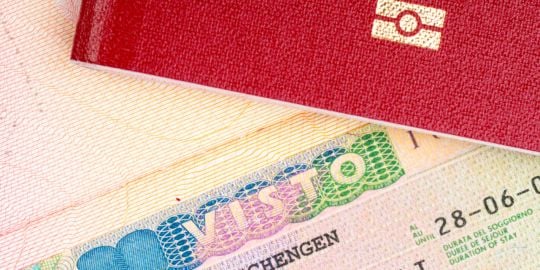Moving with pets to Italy

Transporting a domestic animal can seem like a complex process but if you have all the correct documentation, you shouldn't encounter any obstacles along the way.
Note that it's important to research the specific requirements of your airline or ship ahead of travelling, as they may differ from carrier to carrier. For example, some airlines request differently sized carrier measurements.
Important:
Make sure you have all the correct documentation before departure, or your pet may face quarantine and may even be forced to return home.
Before travelling to Italy
Before you depart, you need to ensure that your pet has been appropriately vaccinated, micro-chipped and that you have the correct documentation to prove your pet is fit for travel. These documents must comply with the European Union Regulation 2013. The following documentation requirements apply to dogs, cats, small birds (parrots excluded), fish, common reptiles, rodents, and rabbits. Guide dogs are subject to the same requirements as any other pets.
Microchip
Your pet must be microchipped to enter Italy. This 15 digit microchip must meet ISO standards (ISO 11784/11785 compliant), with the date and number on the microchip recorded on your pet's health certificate. If the microchip is not ISO compliant, you should consider bringing your own microchip scanner as the scanners at the border control may not be able to read the microchip. Without a scanned microchip, your pet will go into quarantine.
If your pet was tattooed before 3 July 2011, this is also an acceptable form of identification, provided your pet has been vaccinated against rabies since receiving it.
Good to know:
If your pet has already been vaccinated but not microchipped, it will need to be microchipped and re-vaccinated.
Vaccination
All pets must be vaccinated against rabies after microchipping and at least 21 days before departure. Pets entering Italy from a high-risk rabies country will need to undergo a rabies 'titer test' 30 days after the rabies vaccination and at least three calendar months before travelling. You can check whether you are departing from a high-risk rabies country on the Pet Travel website.
Good to know:
Commercial transport is defined as the transportation of pets involving sale, exchange or transfer of ownership, any pet not travelling within five days of its owner, or the transportation of five or more animals.
Health certificate
You do not need a health certificate if your pet is travelling for non-commercial purposes from another EU country to Italy, although you will need to ensure that your veterinarian has updated your EU Pet Passport to confirm this.
If your pet is travelling for non-commercial purposes from outside of the EU, your licensed veterinarian must complete a Non-Commercial EU Health Certificate within ten days.
Note that there are specific regulations in different countries, for example, in the USA the veterinarian must be accredited by the USDA and the health certificate must be endorsed by the State USDA office.
If your pet is travelling from an EU country to Italy for commercial purposes you must ensure it enters via a registered governing body of import and export of pets.You will also need to send an Intra-trade Health Certificate with your pet, which must be completed within 48 hours. The same applies if your pet is travelling from a country outside the EU.
EU Pet Passport
In order to travel anywhere in the EU, your pet will need an EU Pet Passport. This includes your pet's microchip identification number and proof of relevant and required vaccinations. Your EU Pet Passport must be issued by an accredited veterinarian prior to departure if you are travelling from another EU country, or issued upon arrival at your local veterinarian in Italy if you are travelling from a country outside the EU. These are lifetime passports so once issued, it will never need to be renewed.
A carrier labelled with owner contact details.
If you are transporting a bird, you may wish to provide a leg ring as an additional form of identification.
Additional documentation for specific circumstances
- Small birds (with the exception of parrots), fish, common reptiles, rodents, and rabbits can be transported to Italy from another EU or rabies-controlled country but must travel with a health certificate issued by an accredited veterinarian within 48 hours.
- Birds will also need to be tested for Avian Influenza and Newcastle disease one-two weeks before travelling.
- Animals such as parrots need accompanying proof that the animal is not endangered or protected under the Convention on International Trade in Endangered Species of Wild Fauna and Flora (CITES). Additional permits will need to be supplied if this is the case.
Transporting your pet to Italy
You can legally transport your pet by plane, ship, train, or car into Italy.
If you plan to bring your pet into Italy by air unaccompanied, it will need to enter via an international airport.
If you wish to travel to Italy by boat, you will need to inform the company in advance. Requirements vary from ship to ship, with some allowing pets to be kept in cabins.
Arrivals
Once you arrive in Italy, you will need to register with your local accredited vet as soon as possible. If you have travelled from outside of the EU, you will need to request an EU Pet Passport too.
Useful links:









